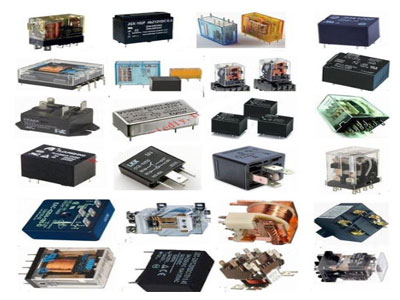Key Takeaway
A relay can be damaged due to several factors. High temperatures can deteriorate the insulation of the coil, leading to malfunctions. Exposing the relay to currents higher than its capacity can also cause significant damage, as it overheats and potentially burns out the coil. Additionally, environmental contaminants like dust, dirt, and moisture can corrode or clog the relay’s contacts, impairing their ability to effectively open and close. This can result in poor performance and eventual failure of the relay. Regular maintenance and proper usage within specified limits are key to preventing damage and extending the life of a relay.
Common Causes of Relay Damage
Relay damage can occur from a variety of sources, critically impacting their performance and longevity. One primary cause is electrical overload, where the relay is subjected to currents beyond its capacity, leading to heat buildup and eventual failure. Another prevalent issue is voltage spikes, which can degrade the relay’s contacts over time. Additionally, improper usage, such as consistently operating a relay beyond its intended duty cycle, can accelerate wear and reduce its operational life.

Impact of Overcurrent on Relays
Overcurrent poses a significant threat to relay durability. When a relay handles more current than it is rated for, excessive heat is generated. This not only risks melting the relay’s internal components but can also lead to solder melting and contact damage, which impairs functionality. Continuous exposure to overcurrent can prematurely age the relay, necessitating its replacement and potentially leading to system failures if not addressed promptly.
You May Like to Read
Effects of Environmental Factors
Environmental factors such as temperature, humidity, and contamination significantly impact relay performance and longevity. High temperatures can cause thermal expansion and degradation of materials, which reduces the relay’s lifespan. This thermal stress affects the integrity of the relay’s components, leading to premature wear and failure. Humidity and moisture pose another significant threat by causing corrosion of contacts and other metal parts. This corrosion increases electrical resistance, leading to unreliable operation and potential relay malfunction. Additionally, dust and other contaminants can obstruct the mechanical movements within the relay, causing sticking or jamming. These contaminants can accumulate over time, further degrading performance.
To mitigate these environmental effects, relays should be installed in controlled environments where temperature and humidity are monitored and maintained within safe limits. Housing relays in protective enclosures with adequate sealing helps prevent moisture ingress and dust accumulation. Using relays with appropriate IP (Ingress Protection) ratings can provide additional assurance of their durability in harsh conditions. Adequate ventilation within enclosures is also critical to dissipate heat and maintain optimal operating temperatures. Implementing these protective measures ensures that relays operate reliably and have a longer service life, minimizing maintenance costs and system downtimes.
Mechanical Wear and Tear
Mechanical wear and tear in relays are inevitable due to their moving parts. Continuous operation, especially in high-frequency switching applications, can cause the contacts to become pitted or eroded. This increases resistance and reduces reliability, making the relay less effective over time. Additionally, the armature and spring mechanisms, which are essential for the relay’s operation, can also wear out. This wear can lead to issues like sticking or incomplete switching, which can cause system malfunctions.
To mitigate these effects, regular maintenance is crucial. Cleaning the contacts to remove oxidation and debris can prevent increased resistance and ensure reliable operation. Lubricating moving parts can reduce friction and wear, extending the relay’s operational life. For relays used in high-vibration environments, it’s essential to choose relays designed to withstand such conditions. These relays typically have reinforced components that can handle the mechanical stress without failing prematurely.
Implementing a preventive maintenance schedule based on the relay’s duty cycle and operational environment can help identify potential issues before they lead to failures. Regular inspections, timely maintenance, and choosing the right type of relay for the application can significantly enhance the longevity and reliability of your relay systems.
Preventive Measures for Relay Longevity
Preventive measures are crucial for ensuring the longevity and reliability of relays. Regular maintenance is key, involving the cleaning of contacts to remove oxidation and debris, and lubricating moving parts to reduce friction. Implementing proper installation practices, such as secure mounting and correct wiring, prevents operational issues that can arise from loose connections or incorrect configurations.
Using overcurrent protection devices, like fuses or circuit breakers, safeguards relays from excessive currents that could cause overheating and damage. Installing relays in controlled environments or protective enclosures shields them from adverse environmental conditions, such as dust, moisture, and extreme temperatures. These conditions can lead to corrosion, thermal expansion, or mechanical obstructions, all of which can impair relay function.
Monitoring relay performance and conducting periodic inspections can identify potential issues early, allowing for timely interventions to prevent failures. This can include using a multimeter to check coil resistance and contact continuity or visually inspecting for signs of wear and damage. By adopting these preventive measures, you can enhance the reliability, safety, and efficiency of relay systems, ensuring they operate optimally for longer periods.
Maintaining a proactive approach to relay care not only extends their service life but also reduces the risk of unexpected downtimes and costly repairs. This ensures that systems relying on relays continue to function smoothly, providing consistent performance in various applications.
Conclusion
Protecting relays from damage is essential for ensuring the reliability and efficiency of electrical systems. Understanding the common causes of relay damage and implementing appropriate preventive measures can significantly enhance relay longevity. By addressing factors like overcurrent, environmental conditions, and mechanical wear, engineers can optimize relay performance and avoid costly downtime, making these practices indispensable in the field of electrical engineering.
